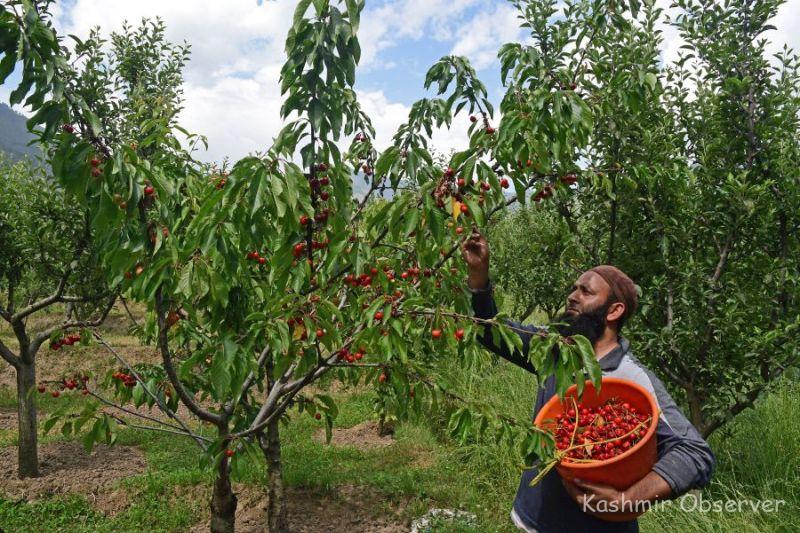
Even as growers are getting ‘vocal about local’ and administration planning to start the historic 86-km-long Mughal Road exclusively for cherry shipments, the concerns caused by COVID curbs continue to make the growers cheerless .
Text by Swati Joshi
Photos by Abid Bhat
IN a bid to boost the battered business and unshackle it from the frequent market uncertainty, young orchardist, Ubair Shah, has been reaching out to his tribe for a fruitful pact for a long time now.
The consortium is aimed at handling the lockdown situation, currently impacting the cherry season in Kashmir Valley.
Shah is offering his platform to orchardists to sell their crop, either directly to customers, or through Business to Business (B2B) model.
“However,” the young orchardist says, “our initiative isn’t matching the surplus amount of cherry that Kashmir produces.”

Founder of Efruitmandi, an initiative to build a farmer network for a better demand with the farm produce, Shah says the cherry growers of Kashmir mainly sell the fruit in local mandi or feed it to the Mandis of Maharashtra.
But due to restrictions in cargo shipment, the growers are incurring huge losses.
“As Mumbai Mandis are not fully functional due to pandemic,” Shah says, “the distressed situation is badly impacting the supply chain and prices.”
Delicate Fruit
As a first seasonal fruit in Kashmir Valley, cherry is mainly produced in Ganderbal, Tangmarg, and Shopian areas.
The harvest season starts in the last week of May and ends by the first week of July.
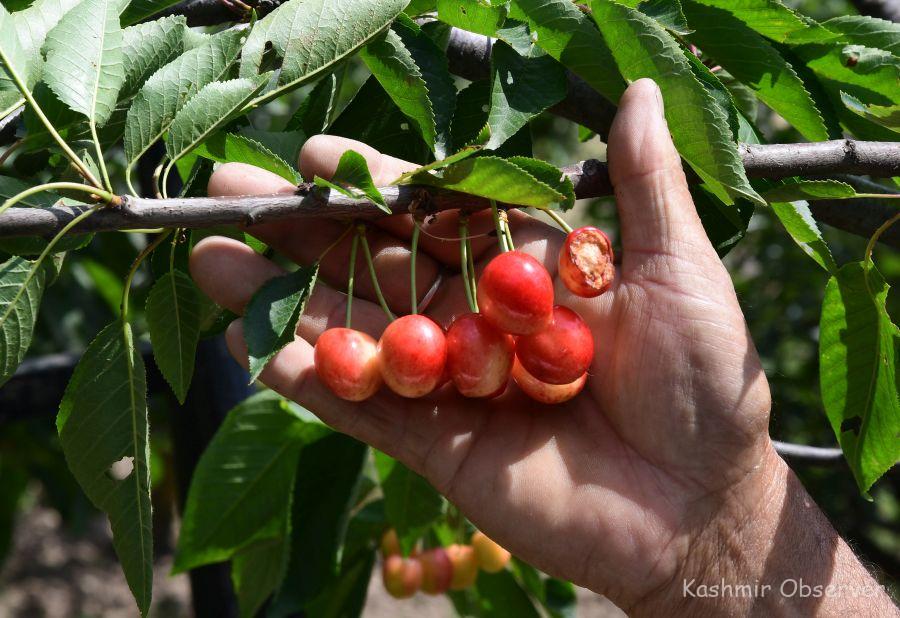
Though the cherries have blossomed in North Kashmir but in South Kashmir, the cherries will be ready for consumption, in over a fortnight’s time, says AG Deewan, a cherry grower in Shopian, hoping that by then the market condition improves.
“I’m selling the cherry boxes at a meagre price of Rs 50,” says Deewan. “As a grower who used to sell cherry boxes at Rs 150 till last year, I’m at a loss.”
The journey of this delicate fruit from the farm to the Mandi cost a lot to the growers.
Bifurcating the cost of each cherry box, Deewan explains, a single piece carries a price tag of Rs 12, add it with the labor wage of around Rs 700, and transportation cost of Rs 40 per box.
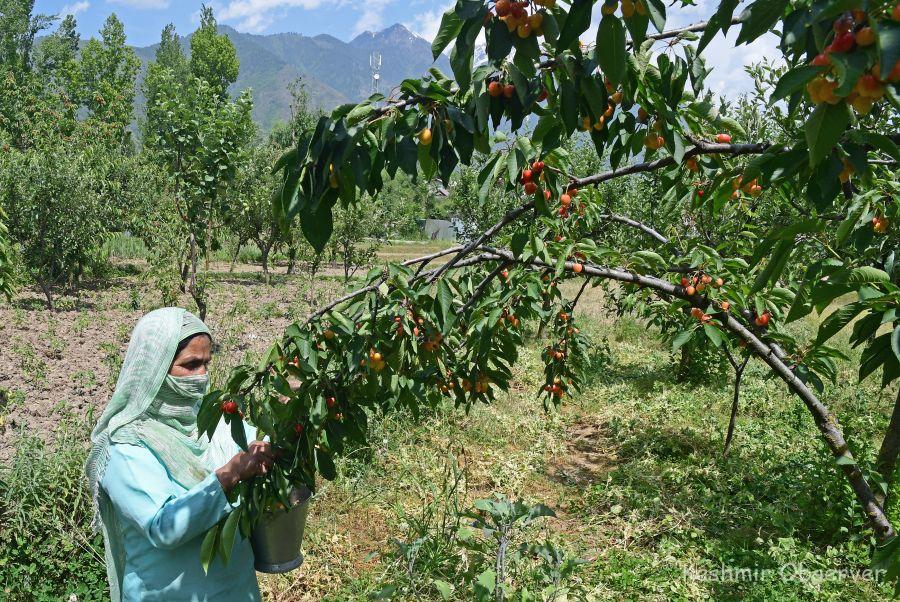
“Last year I sold around 200-250 cherry boxes in the local Mandi and 400-450 boxes to other states,” Deewan recalls.
But this year, continues the cherry grower, business is quite uncertain.
Bumper Crop
As per the official figures maintained by Kashmir’s Horticulture Department, 11,280 metric tonnes of cherries were produced in 2017, while the production surged to 11,789 metric tonnes in 2018.
The cherry production saw a drop with only 11,000 metric tonnes last year due to bad weather.
“The cherry production is good this year and we’re receiving better varieties,” says Zubair Ahmed, a member of the New Kashmir Fruit Association (NKFA), a unit acting as the bridge between the local mandi and the higher authorities.
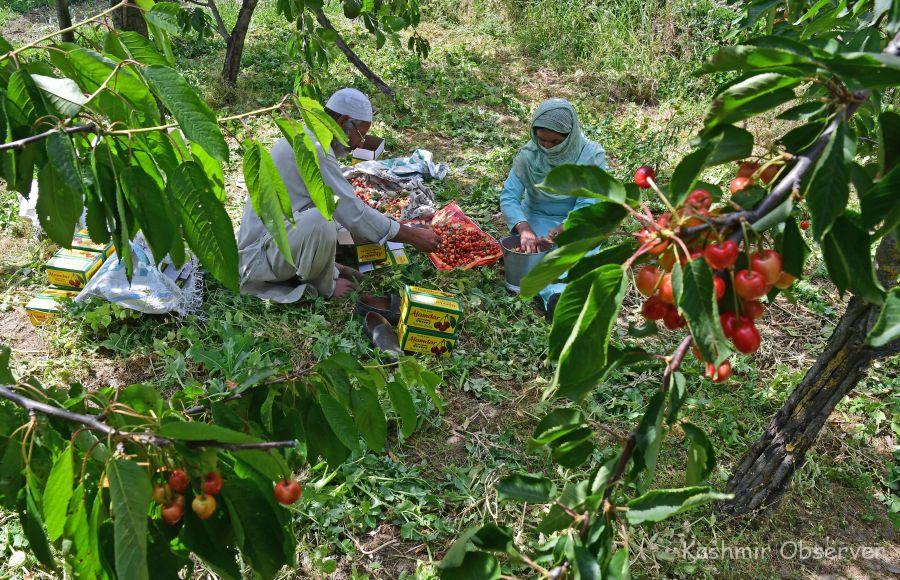
Earlier, Ahmed had to request the growers to feed least cherries to the Mandi given the less demand.
“The cherry growers who used to send 200 cherry boxes are now sending only 100 boxes resulting in the loss of the growers,” he says.
Transportation Blues
The restricted movement is equally playing a spoilsport.
Even before reaching their destination, cherries, with a short shelf life, are rotting to chagrin of the growers.
If a truckload of cherries is sent from Kashmir at night, it should reach Jammu by the morning otherwise it will perish, Ahmed says.
The shelf life of Mishri and Makhmali varieties—making up 60 percent of total cherry produce—is seven and two days respectively.
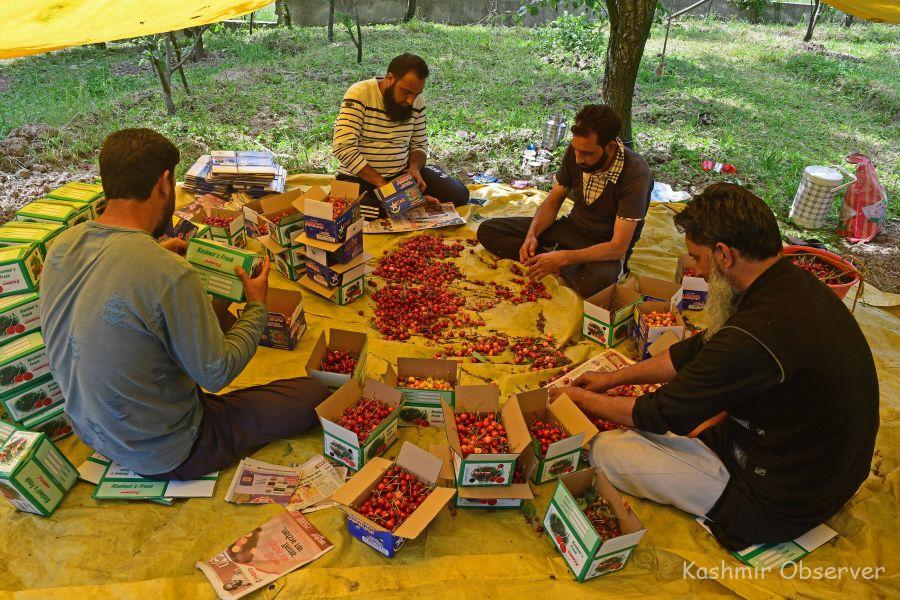
“On May 27,” the NKFA member continues, “we sent a vehicle to Jammu but it remained on the highway for two days, resulting in loss of all the cherries.”
Fearing more losses, the NKFA sought Raj Bhavan’s intervention. Among other things, it requested the LG GC Murmu ‘not to stop fruit vehicles on the highway and operate special cargo flights and trains for the movement of cherries’.
“But nothing has helped so far,” Ahmed says. “Instead I was told by an airport agent that the cost of transportation of cherry boxes has suddenly surged to Rs 75 per kg, from Rs 30 per kg last year.”
The growers, he says, are already in loss, and the increase in the airfare “will only deepen our wounds”.
Factory Hindrance
Presently, the cherry traders of Kashmir are facing another roadblock in the form of the closed canning factories.
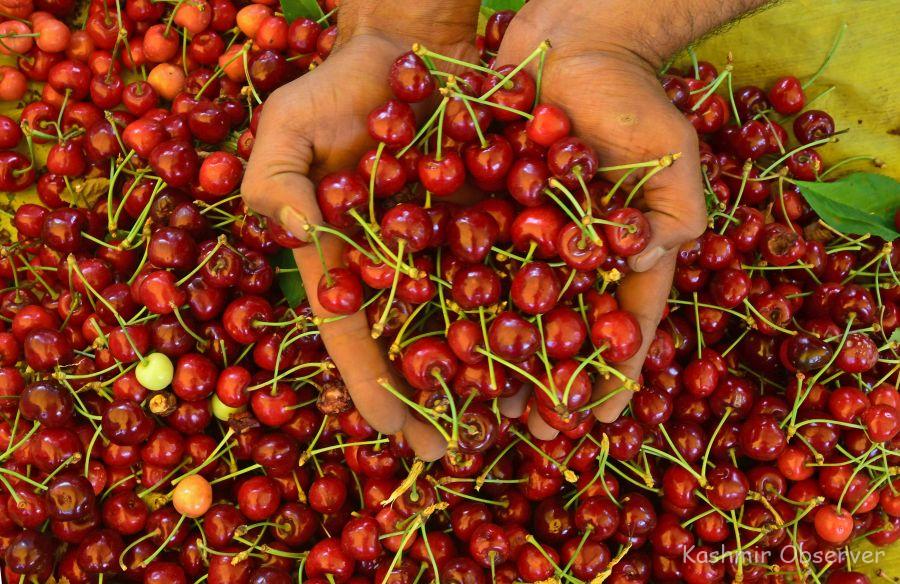
All cherries go to canning factories, but due to the unavailability of labour and raw materials, the factories are closed.
“There’re only two-three canning factories that have restarted working,” says Vikas Khurana, owner of Hukam Chand Chander Mohan Khurana, a major supplier and procurement agent for the canners. “But only 10 per cent of the cherries go to the factories and the rest of it is haywire.”
All these factors are collectively creating a crisis situation for these cherry cultivators, seeking LG Murmu’s intervention in opening the canning units.
Getting Local
But as the official help remains elusive, the NKFA has requested the locals to buy cherries from the local farmers and help them in these tough times.
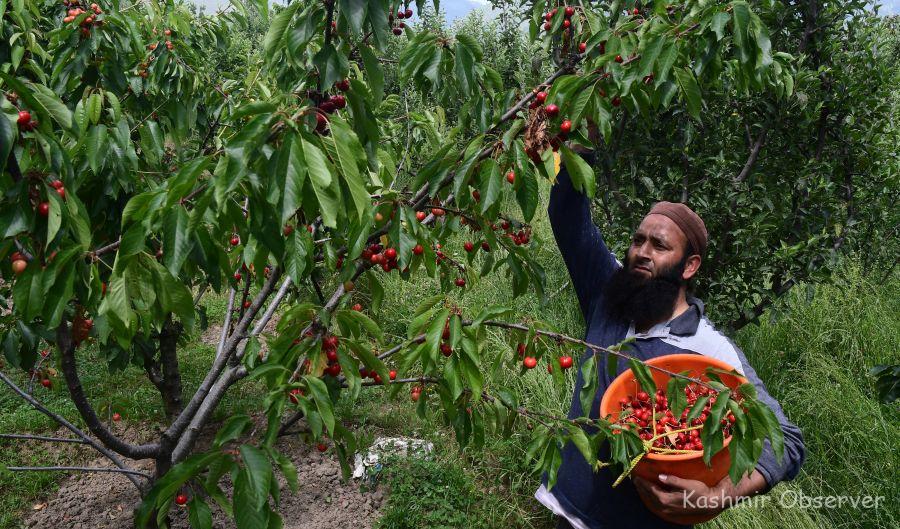
“Even as some attempts are being made in this regard,” says Bashir Ahmad, a cherry grower from Ganderbal, “the current ruthless COVID curbs are only making it a tall order.”
Follow this link to join our WhatsApp group: Join Now
Be Part of Quality Journalism |
Quality journalism takes a lot of time, money and hard work to produce and despite all the hardships we still do it. Our reporters and editors are working overtime in Kashmir and beyond to cover what you care about, break big stories, and expose injustices that can change lives. Today more people are reading Kashmir Observer than ever, but only a handful are paying while advertising revenues are falling fast. |
| ACT NOW |
| MONTHLY | Rs 100 | |
| YEARLY | Rs 1000 | |
| LIFETIME | Rs 10000 | |










